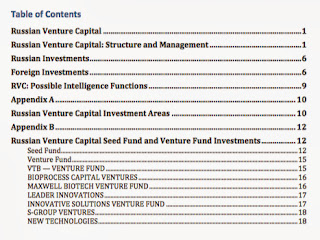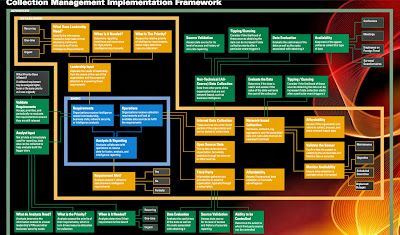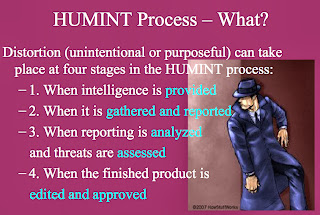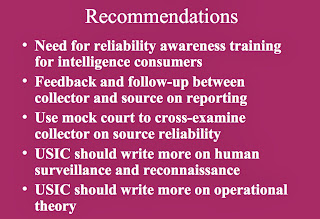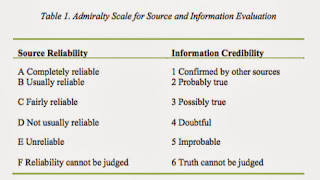No, President Obama didn't authorize a CIA direct action against House Tea Party members who are keeping the government closed. The "Collision" that I'm talking about is the Suits and Spooks event that is happening in Washington DC on January 19-21. Some of you know that I've been reluctant to call it a "conference" ever since I created this event in 2011. Finally, thanks to my friend Jim Stogdill at O'Reilly Media, I've got a new name for it - a collision.
It's the perfect word because that's precisely what happens during many of the talks. It's not a Summit where high profile speakers get to express their opinions without the opportunity for audience members to question them. Our speakers understand that the content of their talks can be challenged at any time by the attendees. And since we keep our total attendance capped to under 150 and keep all of the sessions on a single track, there's a lot of interaction taking place that just doesn't happen at any other event. In fact, when you consider who some of our speakers are, that's a remarkable thing to experience.
Here are just a few of the 25 or so high profile speakers that we've lined up for SNS DC:
Another first for Suits and Spooks DC 2014 will be our workshops. We're not a hacker con so you won't find the workshops that you're accustomed to at Blackhat and other events. That's because there's more to cyber security than malware alone. We'll be offering four workshops in January:
Registration for SNS DC is now open and we're already 25% full. Registration for the workshops is currently open for Lance Cottrell's topic and the others should be ready by next week (separate tuition is charged for the workshops). Here's the link for the SNS DC webpage. See you in January.
And if you're interested in having your company become a sponsor, please shoot me an email.
It's the perfect word because that's precisely what happens during many of the talks. It's not a Summit where high profile speakers get to express their opinions without the opportunity for audience members to question them. Our speakers understand that the content of their talks can be challenged at any time by the attendees. And since we keep our total attendance capped to under 150 and keep all of the sessions on a single track, there's a lot of interaction taking place that just doesn't happen at any other event. In fact, when you consider who some of our speakers are, that's a remarkable thing to experience.
Here are just a few of the 25 or so high profile speakers that we've lined up for SNS DC:
- Barbara M. Hunt: Co-founder of Cutting Edge C.A. who was formerly the Director for Capabilities of Tailored Access Operations at NSA as well as a 20 year veteran technical expert at CIA
- David Howe: CEO at Civitas Group; formerly Special Assistant to the President (Homeland Security Council)
- Carmen Medina: Career senior national security executive at CIA (retired). Assignments included Director for the Center of the Study of Intelligence; Deputy Director of Intelligence; and Chief of the Strategic Assessments Group, Office of Transnational Issues, Directorate of Intelligence.
- Eric O’Neill: Attorney and co-founder, The Georgetown Group; former FBI operative who was instrumental in the Robert Hanssen espionage case.
- John Gilkes: Principal, Deloitte Financial Advisory Services; more than twenty years experience in asset tracing and recovery and in the management and conduct of financial/fraud investigations involving wire transfer fraud, bribery/corruption, and extortion.
- Steven Chabinsky: General Counsel, Chief Risk Officer at CrowdStrike; Previously Deputy Ass’t Director Cyber at FBI
- Stewart Baker: Partner, Steptoe & Johnson LLP; Previously Ass’t Secretary for Policy at DHS
Another first for Suits and Spooks DC 2014 will be our workshops. We're not a hacker con so you won't find the workshops that you're accustomed to at Blackhat and other events. That's because there's more to cyber security than malware alone. We'll be offering four workshops in January:
- Lance Cottrell, the founder of Anonymizer, will teach a half-day workshop on Internet Anonymity and Pseudonymity.
- Rob DuBois, a retired Navy SEAL and former director of operations for the Dept of Defense Red Team will teach a full-day course on how to train and operate a full spectrum red team.
- Carmen Medina, a former Deputy Director of Intelligence at CIA will teach a half-day course on analytic methods.
- Phil Rosenberg and John Gilkes will teach a course on financial fraud investigations and money laundering.
Registration for SNS DC is now open and we're already 25% full. Registration for the workshops is currently open for Lance Cottrell's topic and the others should be ready by next week (separate tuition is charged for the workshops). Here's the link for the SNS DC webpage. See you in January.
And if you're interested in having your company become a sponsor, please shoot me an email.


